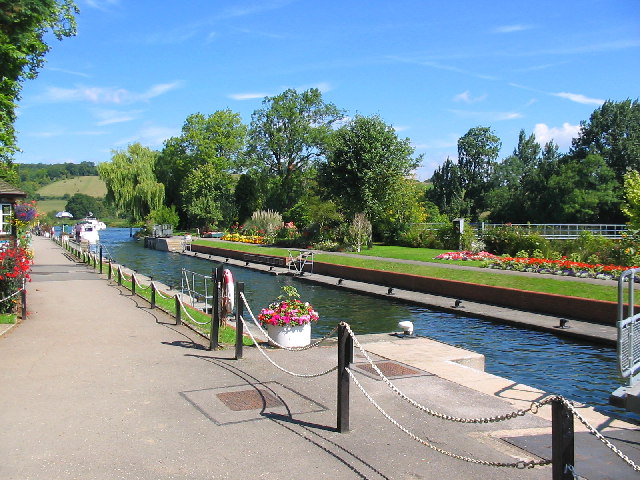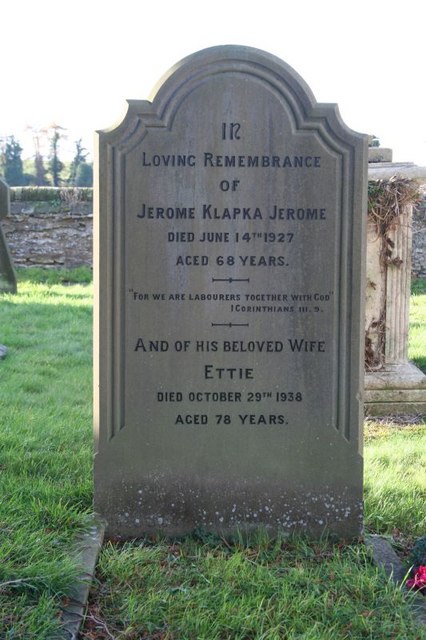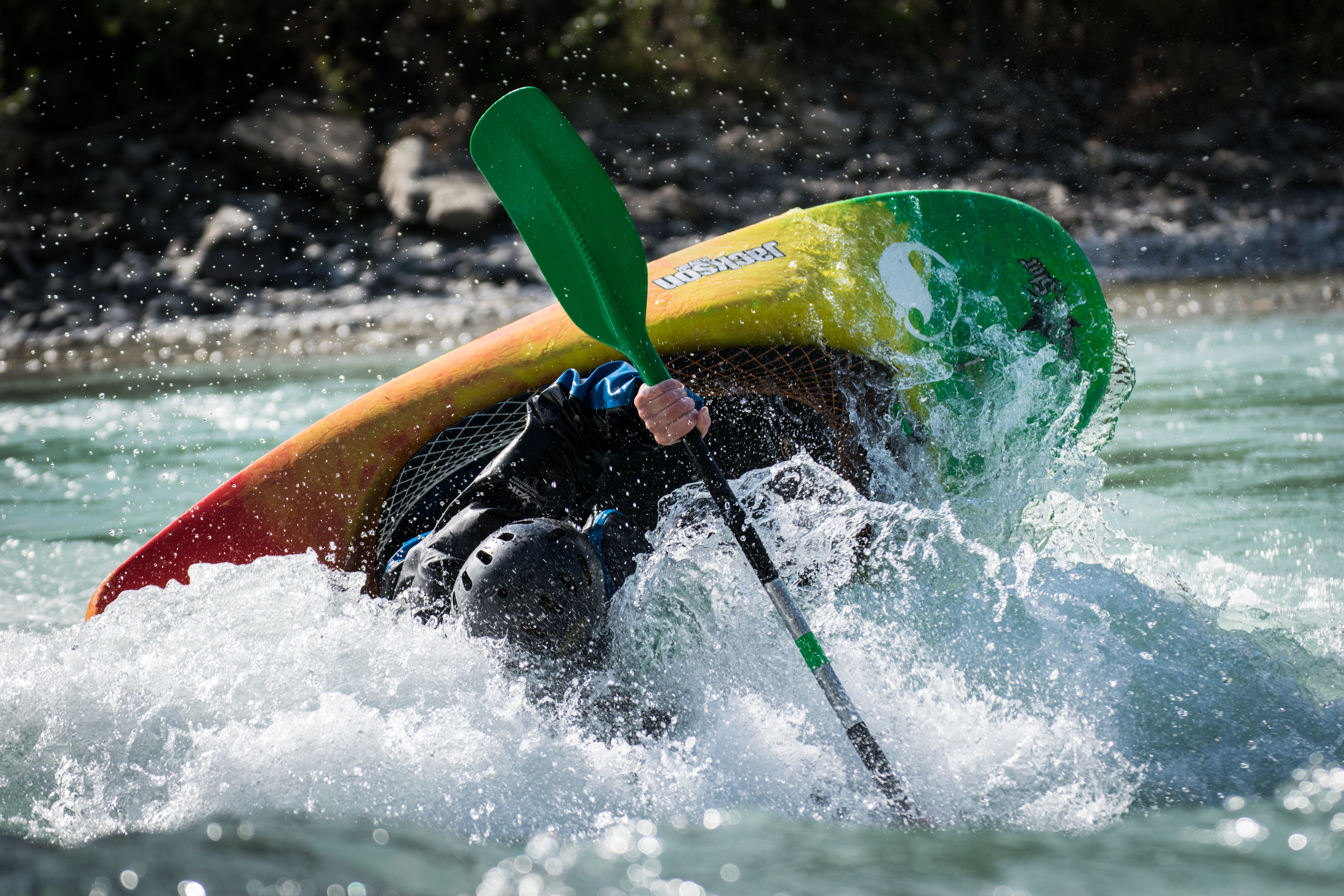|
Hurley Weir
Hurley Lock is a lock and weir on the River Thames in England, situated in a clump of wooded islands close to the village of Hurley, Berkshire. The lock was first built by the Thames Navigation Commissioners in 1773. There are several weirs between the islands but the main weir is upstream between the topmost island and the Buckinghamshire bank. The weir is popular with kayakers whenever conditions are favourable, and it is very busy at weekends. History There was a Flash lock in the weir here, referred to in the 16th and 17th century as "New Lock". The pound lock was opened in 1773, being the fifth downstream of the eight original locks built after the 1770 navigation act. It was constructed of fir wood, and like the other locks, where the fir was subsequently replaced by oak, it was in decay and in need of repair in 1780 and 1785. On the latter occasion the owner of the flash lock was instructed to keep the flash lock in good repair for use by barges. Further repair was ma ... [...More Info...] [...Related Items...] OR: [Wikipedia] [Google] [Baidu] |
River Thames
The River Thames ( ), known alternatively in parts as the River Isis, is a river that flows through southern England including London. At , it is the longest river entirely in England and the second-longest in the United Kingdom, after the River Severn. The river rises at Thames Head in Gloucestershire, and flows into the North Sea near Tilbury, Essex and Gravesend, Kent, via the Thames Estuary. From the west it flows through Oxford (where it is sometimes called the Isis), Reading, Henley-on-Thames and Windsor. The Thames also drains the whole of Greater London. In August 2022, the source of the river moved five miles to beyond Somerford Keynes due to the heatwave in July 2022. The lower reaches of the river are called the Tideway, derived from its long tidal reach up to Teddington Lock. Its tidal section includes most of its London stretch and has a rise and fall of . From Oxford to the Estuary the Thames drops by 55 metres. Running through some of the drier parts ... [...More Info...] [...Related Items...] OR: [Wikipedia] [Google] [Baidu] |
Magpie Island
Magpie Island is an island in the River Thames in England near the villages of Aston, Berkshire and Medmenham, Buckinghamshire. It is situated on the reach above Hurley Lock. Navigation is believed to have passed originally down the present backwater which was then cluttered with eel buck An eel buck or eel basket is a type of fish trap that was prevalent in the River Thames in England up to the 20th century. It was used particularly to catch eels, which were a staple part of the London diet. Eel bucks were baskets made of willow ...s. In the eighteenth century the island was part of the Culham Court estate.Fred. S. Thacker ''The Thames Highway: Volume II Locks and Weirs'' 1920 - republished 1968 David & Charles References Islands of Berkshire Islands of the River Thames Remenham {{Berkshire-geo-stub ... [...More Info...] [...Related Items...] OR: [Wikipedia] [Google] [Baidu] |
Locks On The River Thames
The English River Thames is navigable from Cricklade (for very small, shallow boats) or Lechlade (for larger boats) to the sea, and this part of the river falls 71 meters (234 feet). There are 45 locks on the river, each with one or more adjacent weirs. These lock and weir combinations are used for controlling the flow of water down the river, most notably when there is a risk of flooding, and provide for navigation above the tideway. History From ancient times there were many obstructions across the Thames, for fish-pounds and millers' weirs. They are referred to by Asserius Menevensis in the ninth century and Magna Carta (1215) states that "weirs, for the time to come, shall be demolished in the Thames and Medway, except on the sea coast." It appears this never happened. In the Middle Ages, the fall on the river in its middle and upper sections was used to drive watermills for the production of flour and paper and various other purposes such as metal-beating. This inv ... [...More Info...] [...Related Items...] OR: [Wikipedia] [Google] [Baidu] |
Jerome K Jerome
Jerome Klapka Jerome (2 May 1859 – 14 June 1927) was an English writer and humourist, best known for the comic Travel literature, travelogue ''Three Men in a Boat'' (1889). Other works include the essay collections ''Idle Thoughts of an Idle Fellow'' (1886) and ''Second Thoughts of an Idle Fellow''; ''Three Men on the Bummel'', a sequel to ''Three Men in a Boat''; and several other novels. Jerome was born in Walsall, England, and, although he was able to attend grammar school, his family suffered from poverty at times, as did he as a young man trying to earn a living in various occupations. In his twenties, he was able to publish some work, and success followed. He married in 1888, and the honeymoon was spent on a boat on the Thames; he published ''Three Men in a Boat'' soon afterwards. He continued to write fiction, non-fiction and plays over the next few decades, though never with the same level of success. Early life Jerome was born at Belsize House, 1 Caldmore Road, in ... [...More Info...] [...Related Items...] OR: [Wikipedia] [Google] [Baidu] |
Hurley Lock (Nancy)
Hurley Lock is a lock and weir on the River Thames in England, situated in a clump of wooded islands close to the village of Hurley, Berkshire. The lock was first built by the Thames Navigation Commissioners in 1773. There are several weirs between the islands but the main weir is upstream between the topmost island and the Buckinghamshire bank. The weir is popular with kayakers whenever conditions are favourable, and it is very busy at weekends. History There was a Flash lock in the weir here, referred to in the 16th and 17th century as "New Lock". The pound lock was opened in 1773, being the fifth downstream of the eight original locks built after the 1770 navigation act. It was constructed of fir wood, and like the other locks, where the fir was subsequently replaced by oak, it was in decay and in need of repair in 1780 and 1785. On the latter occasion the owner of the flash lock was instructed to keep the flash lock in good repair for use by barges. Further repair was ma ... [...More Info...] [...Related Items...] OR: [Wikipedia] [Google] [Baidu] |
Standing Wave
In physics, a standing wave, also known as a stationary wave, is a wave that oscillates in time but whose peak amplitude profile does not move in space. The peak amplitude of the wave oscillations at any point in space is constant with respect to time, and the oscillations at different points throughout the wave are in phase. The locations at which the absolute value of the amplitude is minimum are called nodes, and the locations where the absolute value of the amplitude is maximum are called antinodes. Standing waves were first noticed by Michael Faraday in 1831. Faraday observed standing waves on the surface of a liquid in a vibrating container. Franz Melde coined the term "standing wave" (German: ''stehende Welle'' or ''Stehwelle'') around 1860 and demonstrated the phenomenon in his classic experiment with vibrating strings. This phenomenon can occur because the medium is moving in the direction opposite to the movement of the wave, or it can arise in a stationary med ... [...More Info...] [...Related Items...] OR: [Wikipedia] [Google] [Baidu] |
Playboating
Canoe freestyle (also known as playboating) is a discipline of whitewater kayaking or canoeing where people perform various technical moves in one place (a playspot), as opposed to downriver whitewater canoeing or kayaking where the objective is to travel the length of a section of river (although whitewater paddlers will often stop and play en route). Specialised canoes or kayaks (boats) known as playboats are often used, but any boat can be used for playing. The moves and tricks are often similar to those performed by snowboarders, surfers or skaters, where the athlete completes spins, flips, turns, etc. With modern playboats it is possible to get the kayak and the paddler completely airborne while performing tricks. The competitive side of playboating is known as freestyle kayaking (formerly called rodeo). Playspots Playspots are typically stationary features on rivers, in particular standing waves (which may be breaking or partially breaking), hydraulic jumps, 'holes' and ... [...More Info...] [...Related Items...] OR: [Wikipedia] [Google] [Baidu] |
Spargo Frontsurf Kayak Playboating2006
Spargo is a surname. Notable people with the surname include: * Bob Spargo Sr. (1919-1994), Australian rules footballer * Bob Spargo (born 1939), Australian rules footballer *Charlie Spargo (born 1999), Australian rules footballer *John Spargo (1876–1966), British political writer and socialist * John Spargo (water polo) (born 1931) American water polo player *Paul Spargo (born 1966), Australian rules footballer * Ricky Spargo (born 1947), Australian rules footballer * Stephen Spargo (1903–1972), English footballer * Thomas J. Spargo, American former judge *Tony Sbarbaro (1897–1969), American jazz drummer Fictional characters * Harry Spargo and his wife Beryl, characters in the television series ''Upstairs Downstairs'' Other * Spargo (band), a Dutch disco-funk-band See also * Lower Spargo and Upper Spargo, hamlets in Cornwall Cornwall (; kw, Kernow ) is a historic county and ceremonial county in South West England. It is recognised as one of the Celtic nations, and ... [...More Info...] [...Related Items...] OR: [Wikipedia] [Google] [Baidu] |




